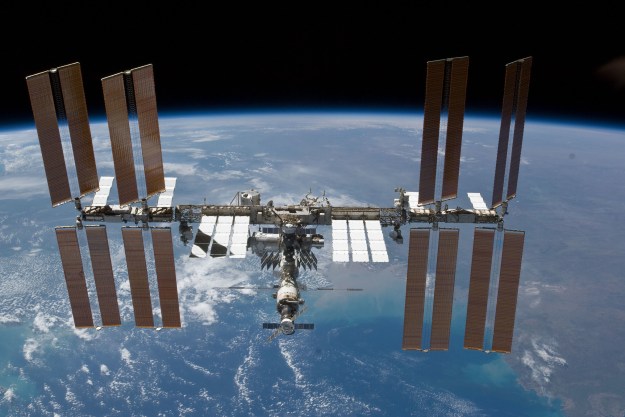Amateur astronaut Yusaku Maezawa is settling into life aboard the International Space Station (ISS) after arriving there last week.
The Japanese self-made billionaire, who made his fortune in online fashion retail, traveled to the ISS on board a Russian Soyuz spacecraft with compatriot Yozo Hirano, a video producer who will document Maezawa’s 11 days aboard the orbiting outpost. Veteran cosmonaut Alexander Misurkin is also part of the space tourism mission.
Several days into his once-in-a-lifetime adventure, 46-year-old Maezawa shared an awesome time-lapse video (below) showing the station performing a complete orbit of Earth.
Took a time lapse of Earth from the ISS window.
This is exactly an entire orbit around Earth. Breathtaking. pic.twitter.com/54L8lwdmLr— Yusaku Maezawa (MZ) (@yousuckMZ) December 12, 2021
Traveling at around 17,000 mph, the ISS orbits Earth around 16 times in a 24-hour period — or once about every 90 minutes. Maezawa’s time-lapse, however, compresses a single orbit into 24 seconds, and the result is pretty impressive.
The video starts with a beautiful sunrise and ends with an equally idyllic sunset as the station completes an entire orbit of our planet. In between, we can see Earth passing quickly by 250 miles below while the station’s solar arrays constantly adjust to the best position for capturing energy from the sun.
How Maezawa got to the ISS
Maezawa’s road to riches started in the 1990s with a home-based mail order business selling CDs and records, leading to the launch of the hugely successful online fashion retail platform Zozotown in Japan in 2004. Forbes puts his current net worth at around $2 billion.
The entrepreneur, who’s also hoping to go on a flyby of the moon in the coming years in a SpaceX spacecraft, has not revealed how much he paid for the trip to the space station.
Like regular astronauts, Maezawa and his fellow traveler had to go through extensive training in the six months prior to launch, with the station’s latest guest tweeting regularly about what sometimes seemed like rather bizarre preparatory tasks.
Maezawa’s stay on the station represents part of growing efforts by NASA and its counterparts to commercialize the ISS, using the missions to help fund further space exploration and research.
In October the ISS hosted a couple of Russian filmmakers and next month SpaceX will fly a crew of three private citizens and a former NASA astronaut to the station for a 10-day stay.
Editors' Recommendations
- See incredible time lapses of two of space’s most famous objects
- Homeward bound private astronaut shares gorgeous night shots of Earth
- Private astronauts enjoy extra time aboard the space station
- SpaceX needs good weather for Wednesday’s crewed launch. Here’s the forecast
- Watch this footage of a shooting star captured from the space station


